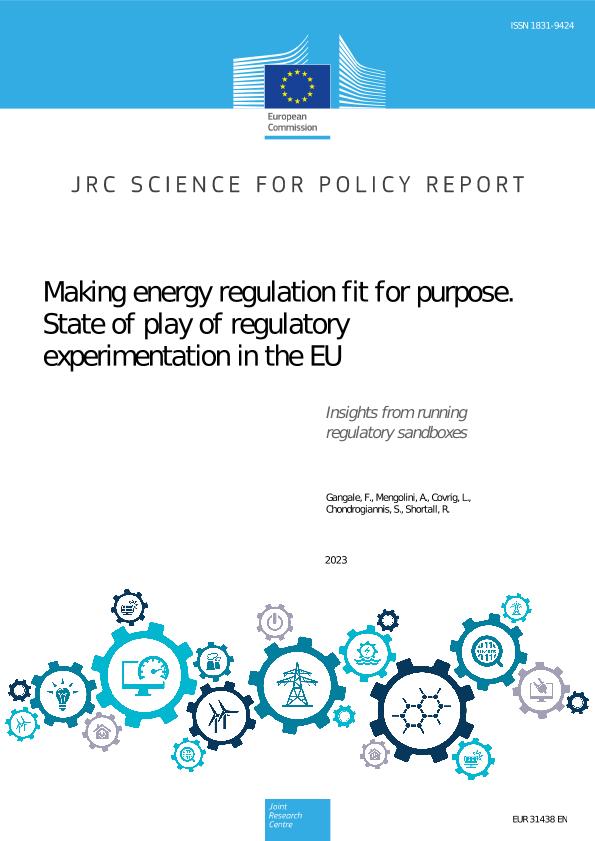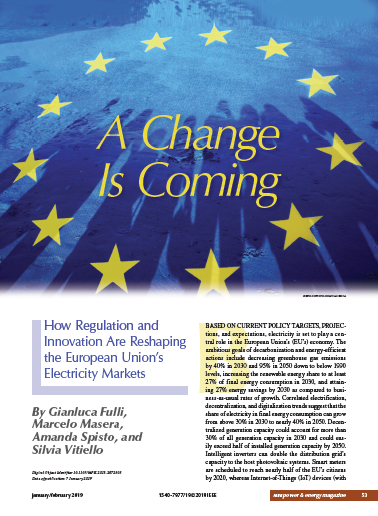Context
The electricity system needs to keep up with the innovation pace and anticipate the infrastructure and market arrangements fit for the perspective electricity delivery solutions and services. For this reason we monitor the challenges for redesigning the European electricity systems and assess regulatory solutions and technological options for the systemic integration of low-carbon solutions in the European electricity grids.
Regulation can help to accelerate the adoption of innovative technologies, solutions and business models, thus reflecting the fast-changing environment that digitalisation and decarbonisation bring about, while continuing to empower and protect consumers. Regulators have a range of tools for engaging with and addressing innovation (e.g. regulatory sandboxes, regulatory pilot projects and pilot regulations).
Our role
We analyse regulatory experimentation initiatives conducted in EU Member States to identify forms of regulatory experimentation adopted, areas of experimentation, stakeholders involved, emerging trends and lessons learned.
Main publications

2023 - Making energy regulation fit for purpose. State of play of regulatory experimentation in the EU
In this report, we investigate the role of regulatory experimentation as an innovation tool to enable and facilitate the energy transition. Regulation can help to accelerate the adoption of innovative technologies, solutions and business models, thus reflecting the fast-changing environment that digitalisation and decarbonisation bring about, while continuing to empower and protect consumers. Regulators have a range of tools for engaging with and addressing innovation (e.g. regulatory sandboxes, regulatory pilot projects and pilot regulations). We analyse regulatory experimentation initiatives conducted in EU Member States to identify forms of regulatory experimentation adopted, areas of experimentation, stakeholders involved, emerging trends and lessons learned. The analysis, based on the existing literature, desk research and interviews with competent authorities, includes initiatives already implemented at national level, as well as those under development or still in the planning phase. Differences in national regulatory frameworks and a lack of uniform information on the assumptions, requirements, and results of the initiatives, hinder comparisons of national experience. An overview of the main developments, however, may help to show the direction EU Member States are taking and to reflect on the opportunity for providing EU level guidance to support the implementation of regulatory experimentation initiatives at national level.

2019 - A Change is Coming: How Regulation and Innovation Are Reshaping the European Union's Electricity Markets
Based on current policy targets, projections, and expectations, electricity is set to play a central role in the European Union's (EU's) economy. The ambitious goals of decarbonization and energy-efficient actions include decreasing greenhouse gas emissions by 40% in 2030 and 95% in 2050 down to below 1990 levels, increasing the renewable energy share to at least 27% of final energy consumption in 2030, and attaining 27% energy savings by 2030 as compared to business- as-usual rates of growth. Correlated electrification, decentralization, and digitalization trends suggest that the share of electricity in final energy consumption can grow from above 30% in 2030 to nearly 40% in 2050. Decentralized generation capacity could account for more than 30% of all generation capacity in 2030 and could easily exceed half of installed generation capacity by 2050. Intelligent inverters can double the distribution grid's capacity to the host photovoltaic systems. Smart meters are scheduled to reach nearly half of the EU's citizens by 2020, whereas Internet-of-Things (IoT) devices (with embedded functions that interact with the grid) could serve the majority of the EU's population by 2030.
